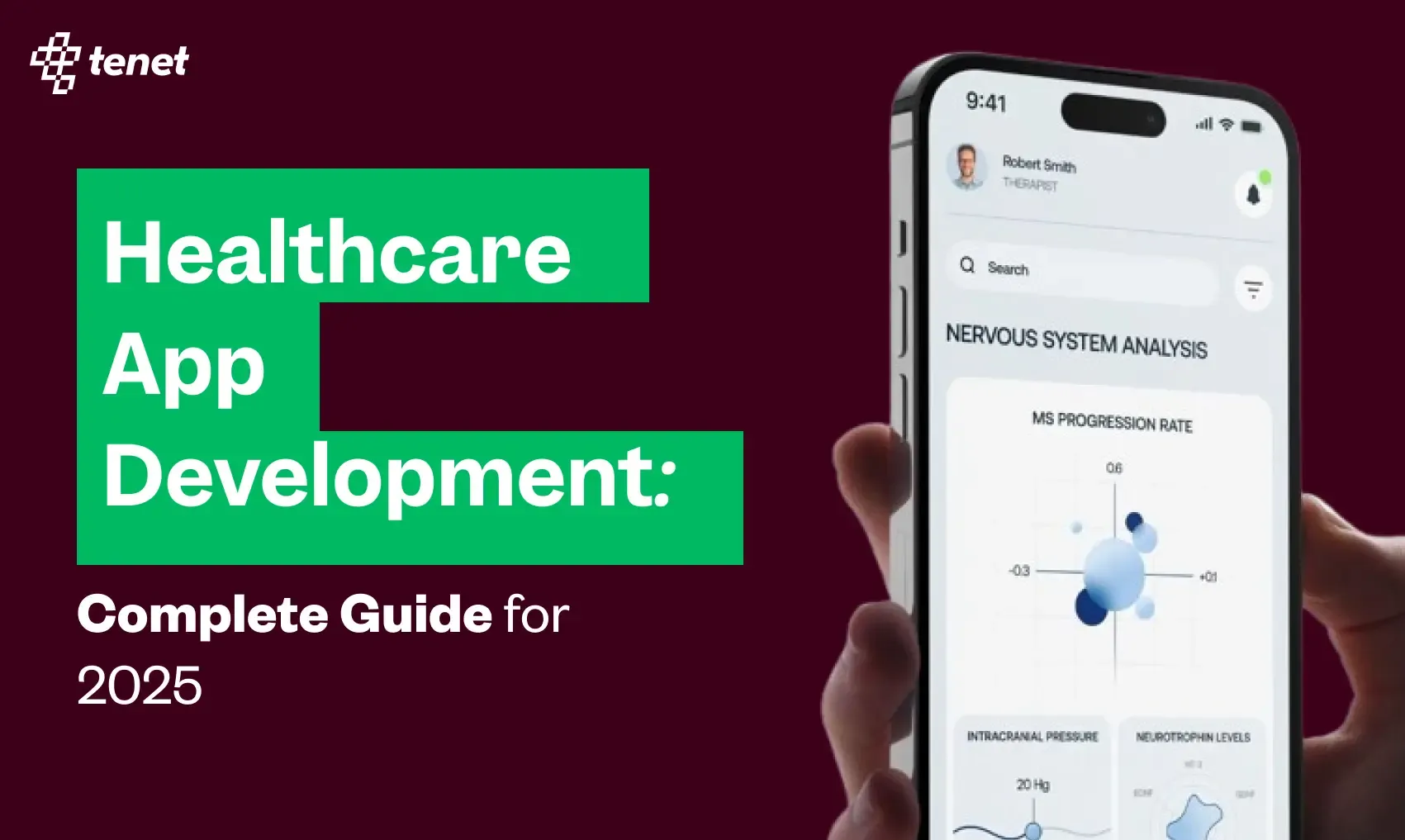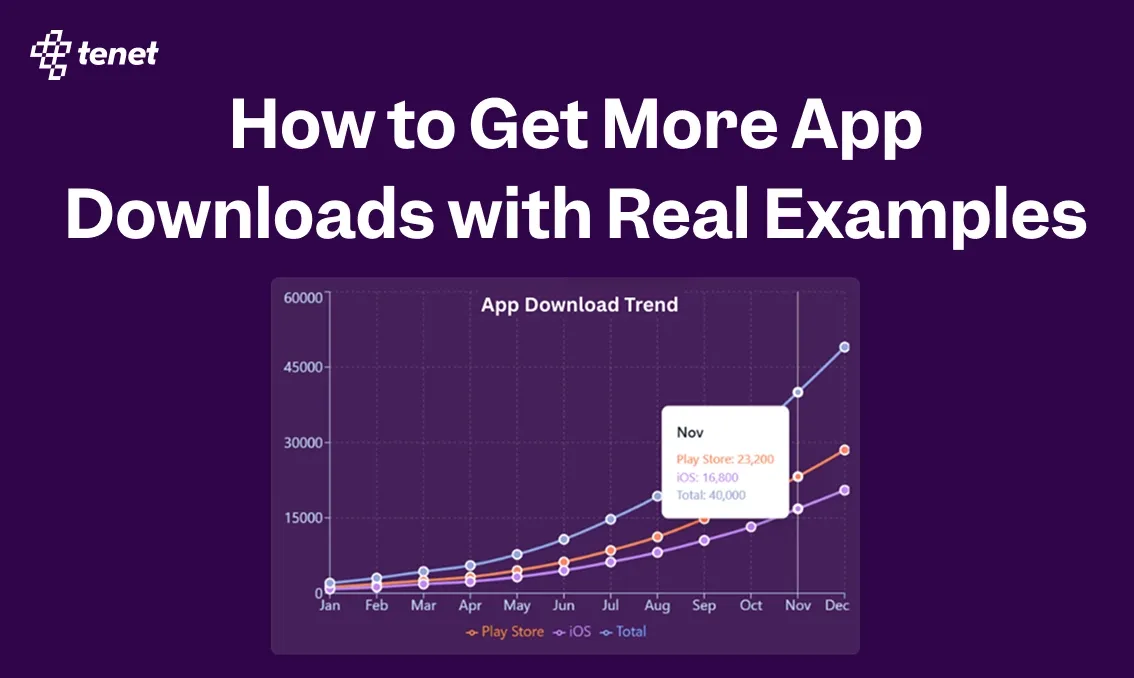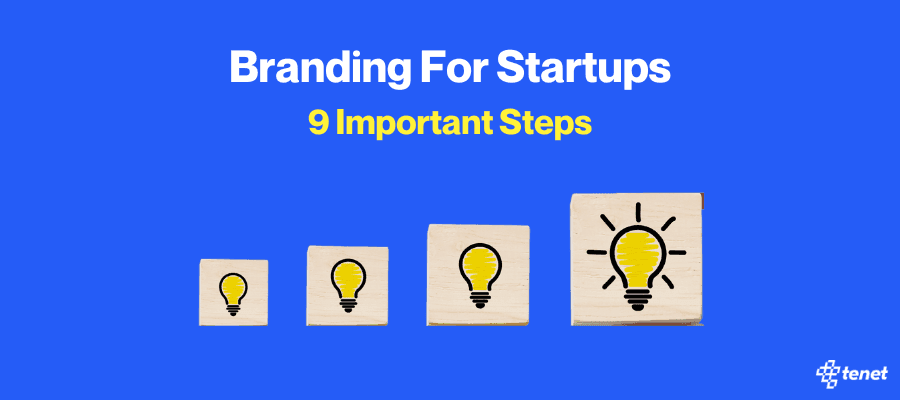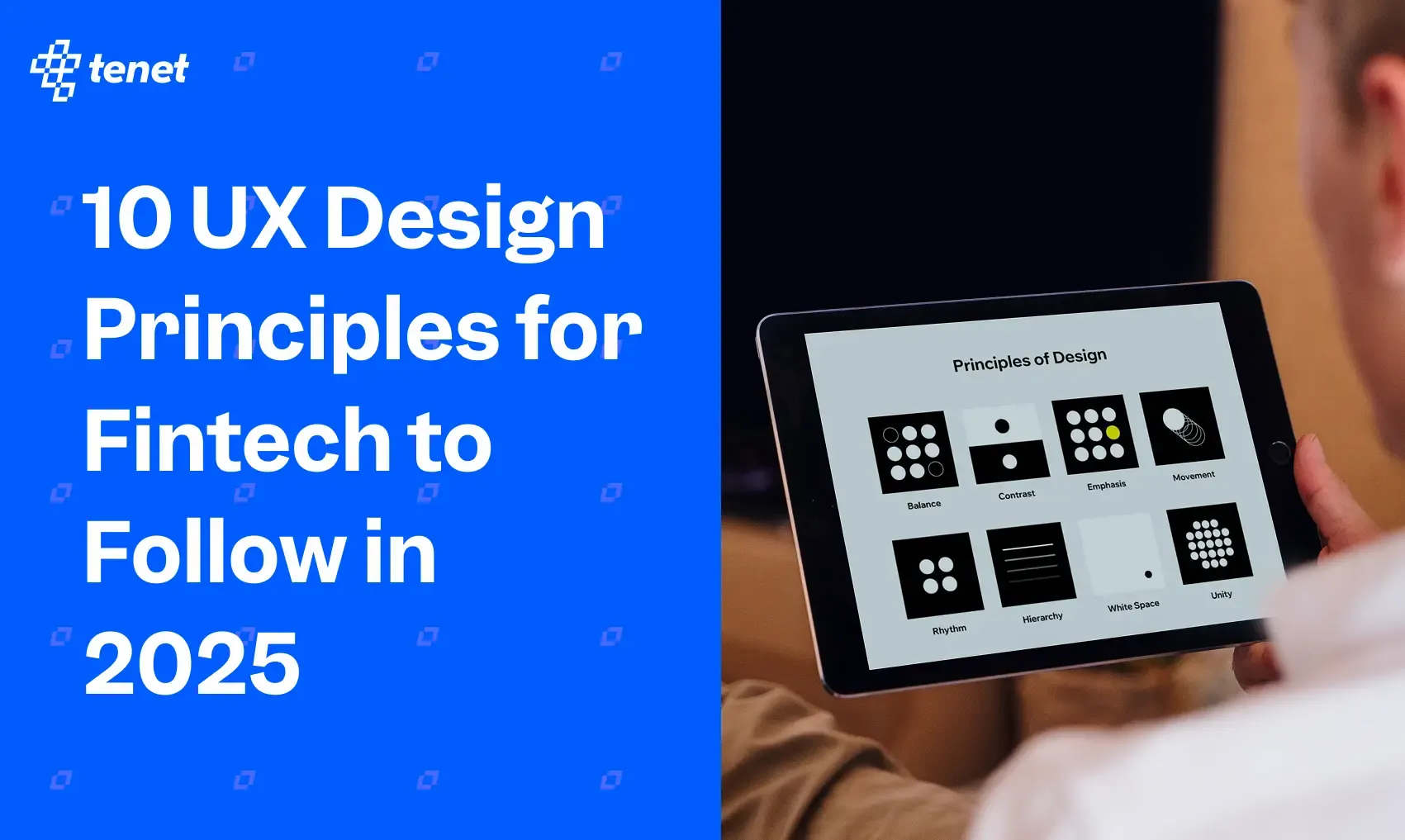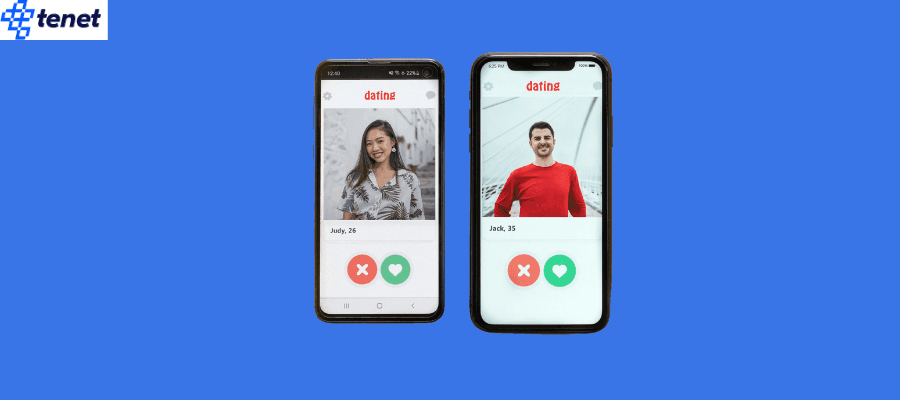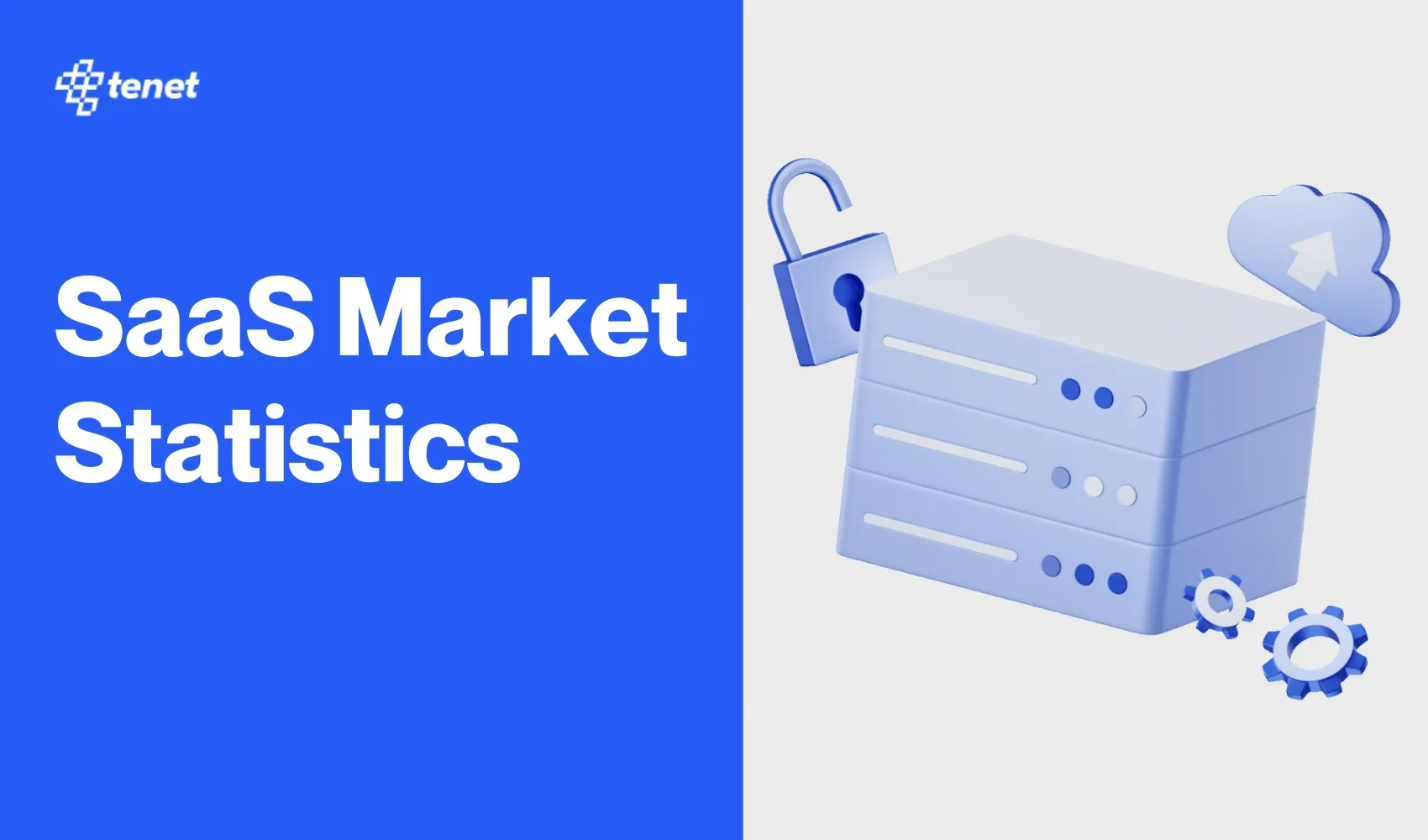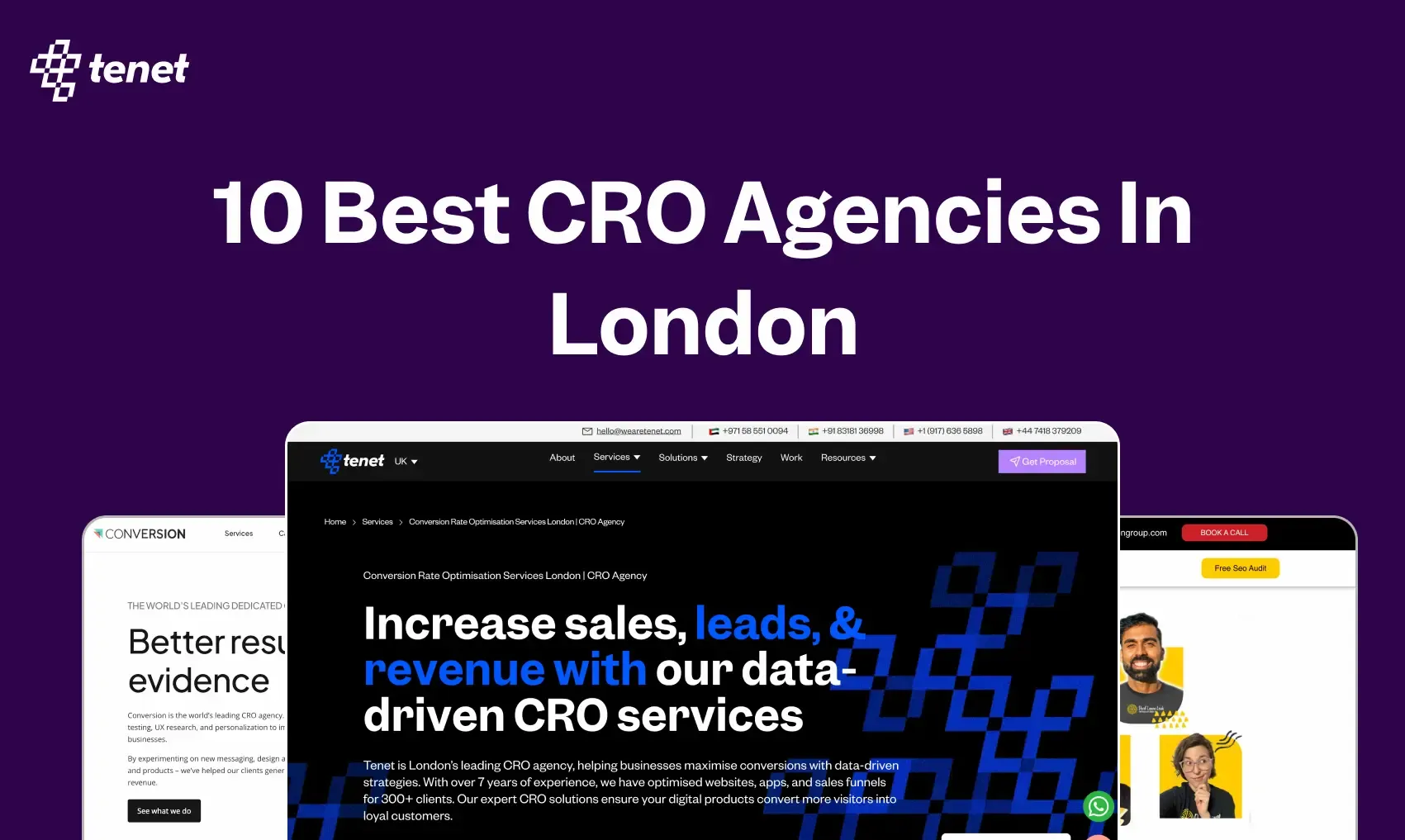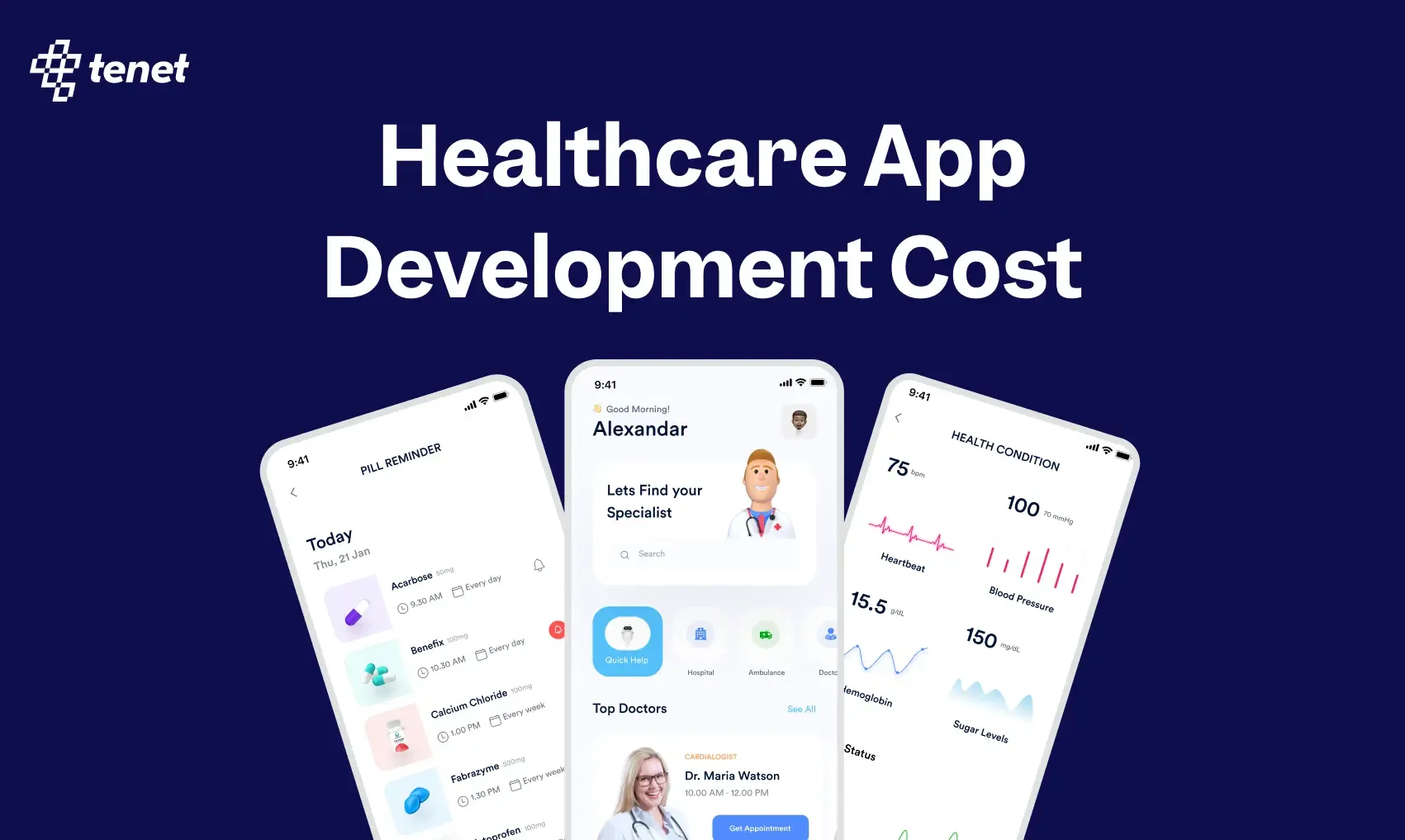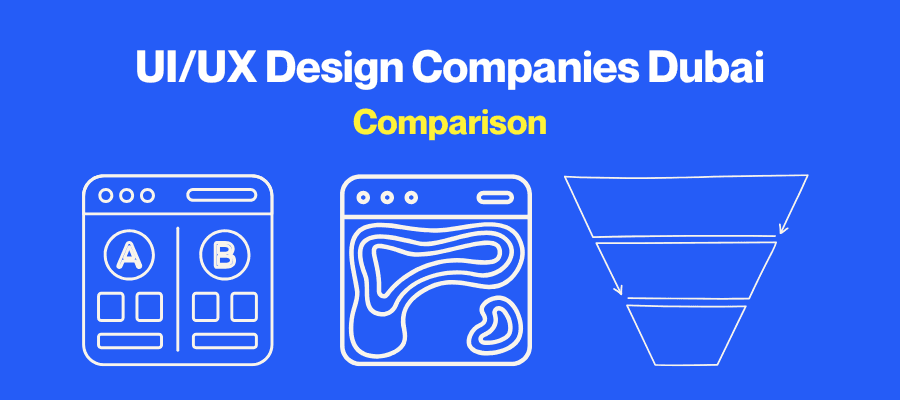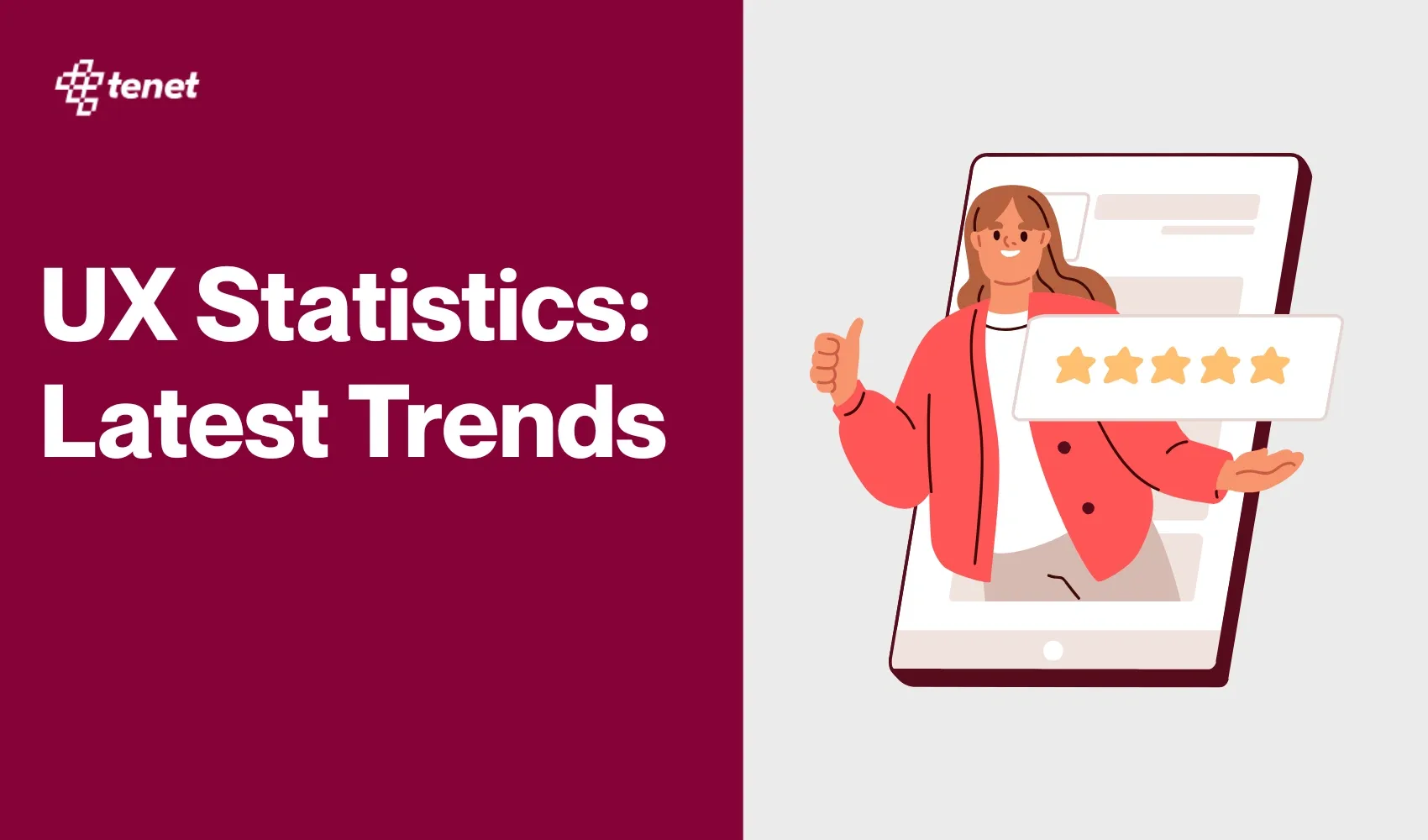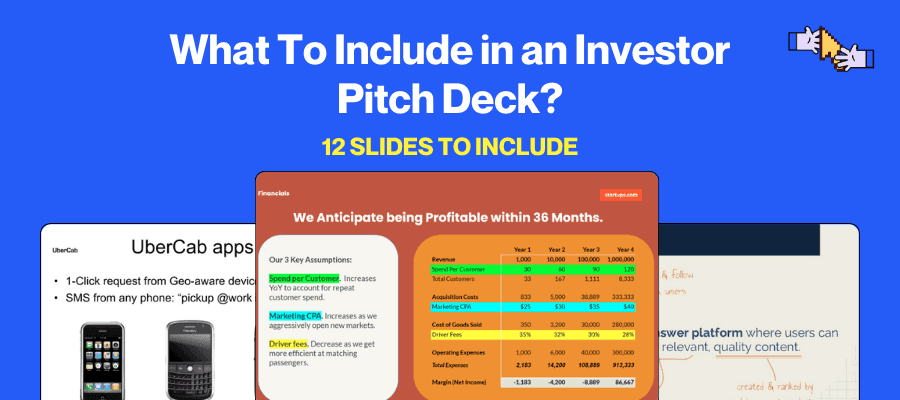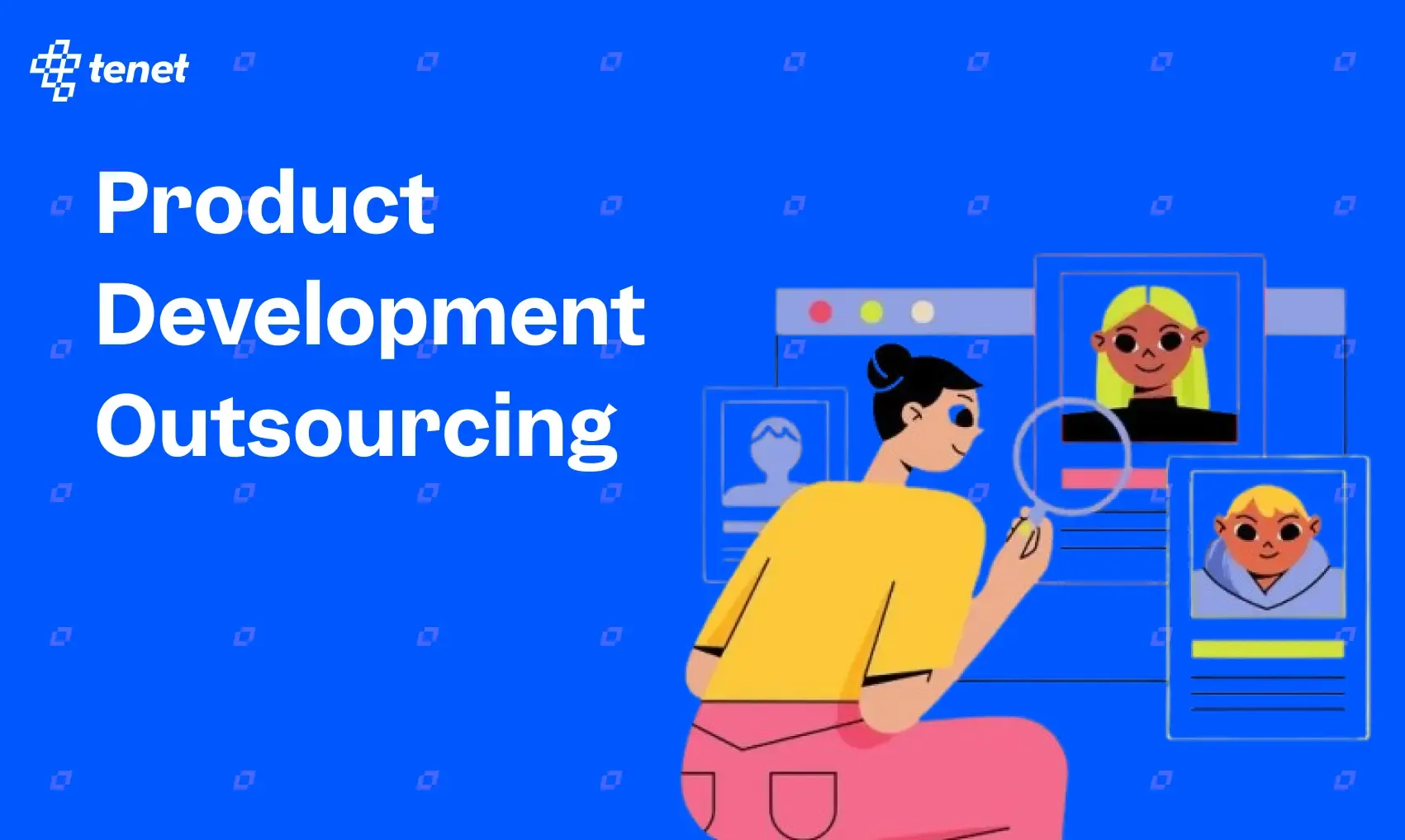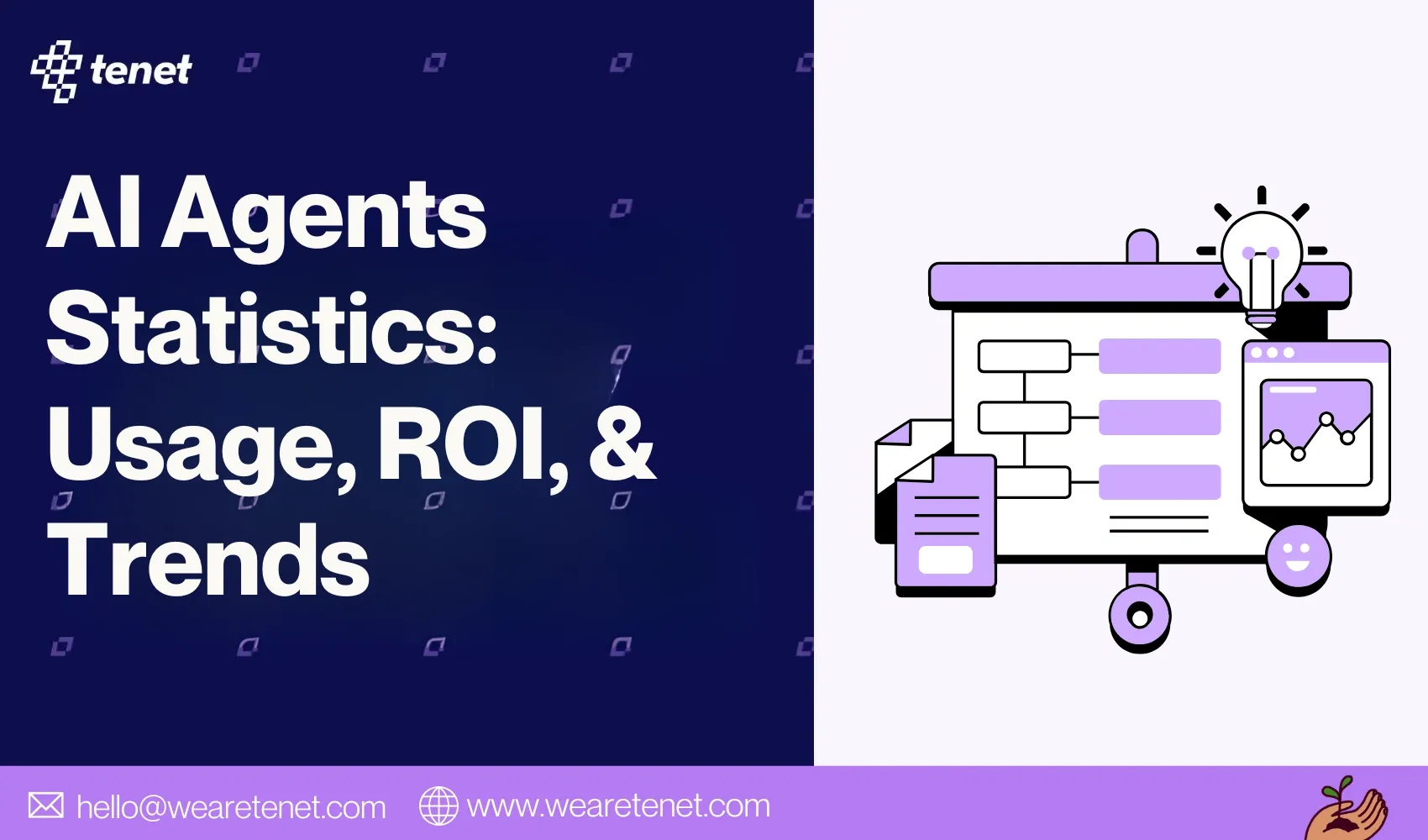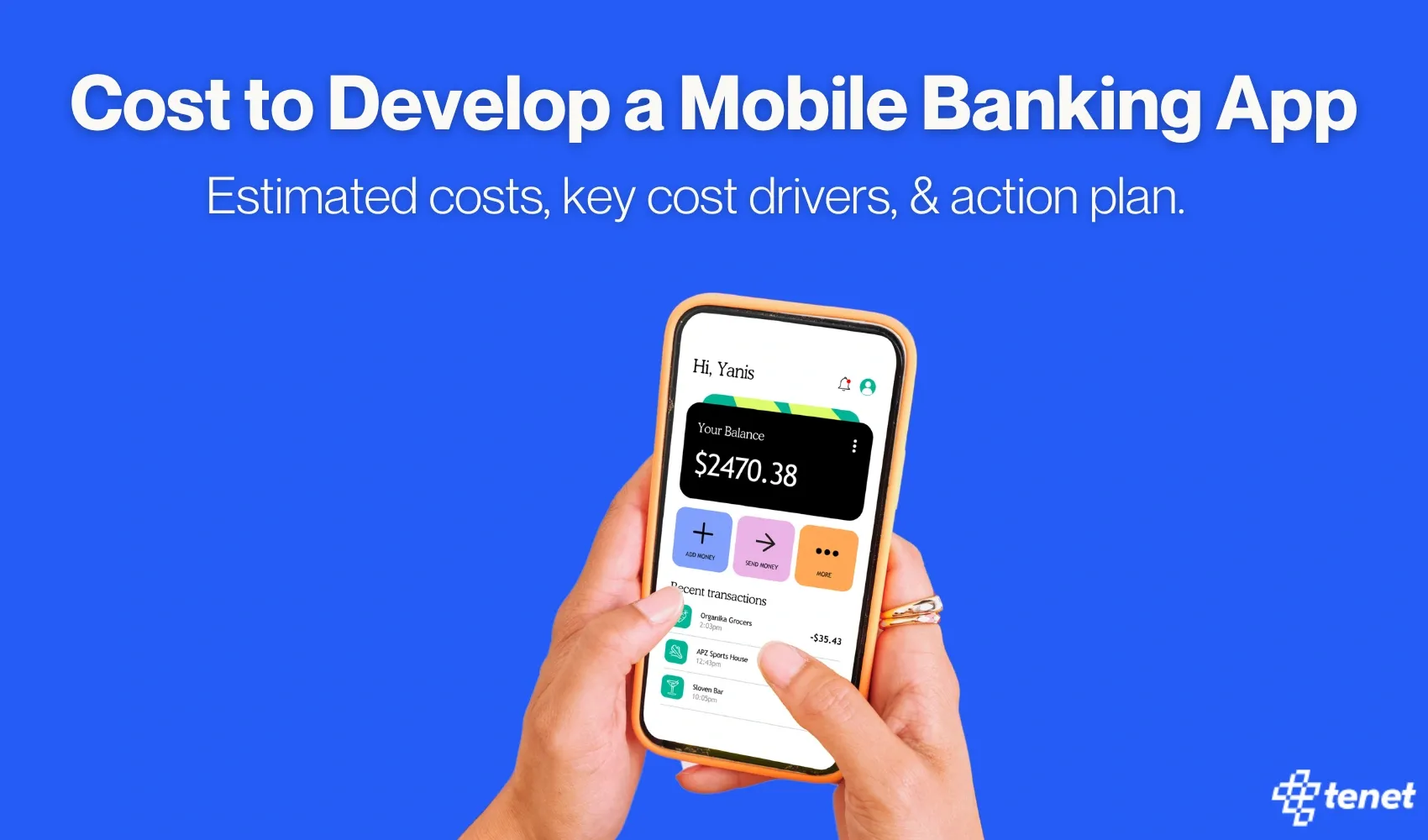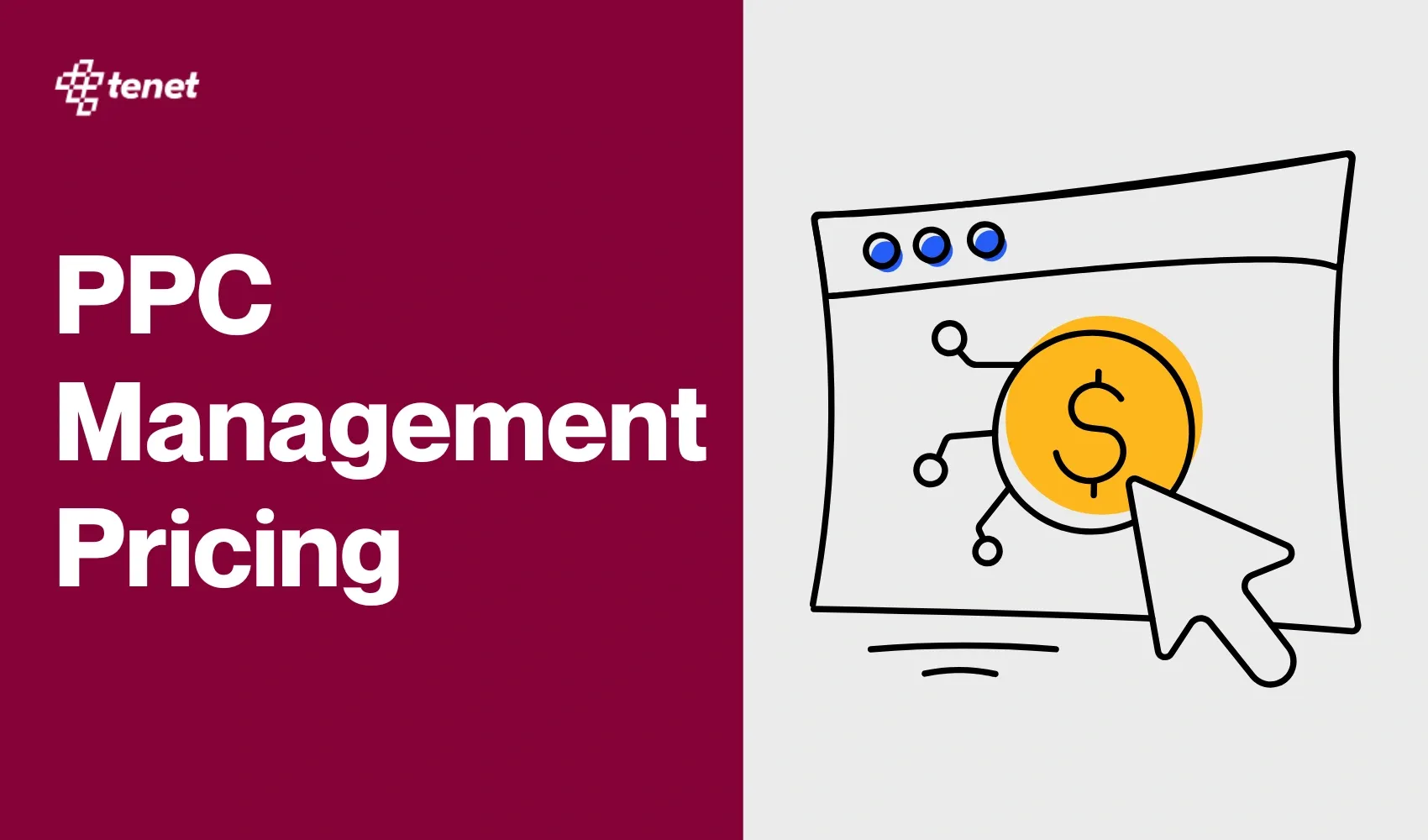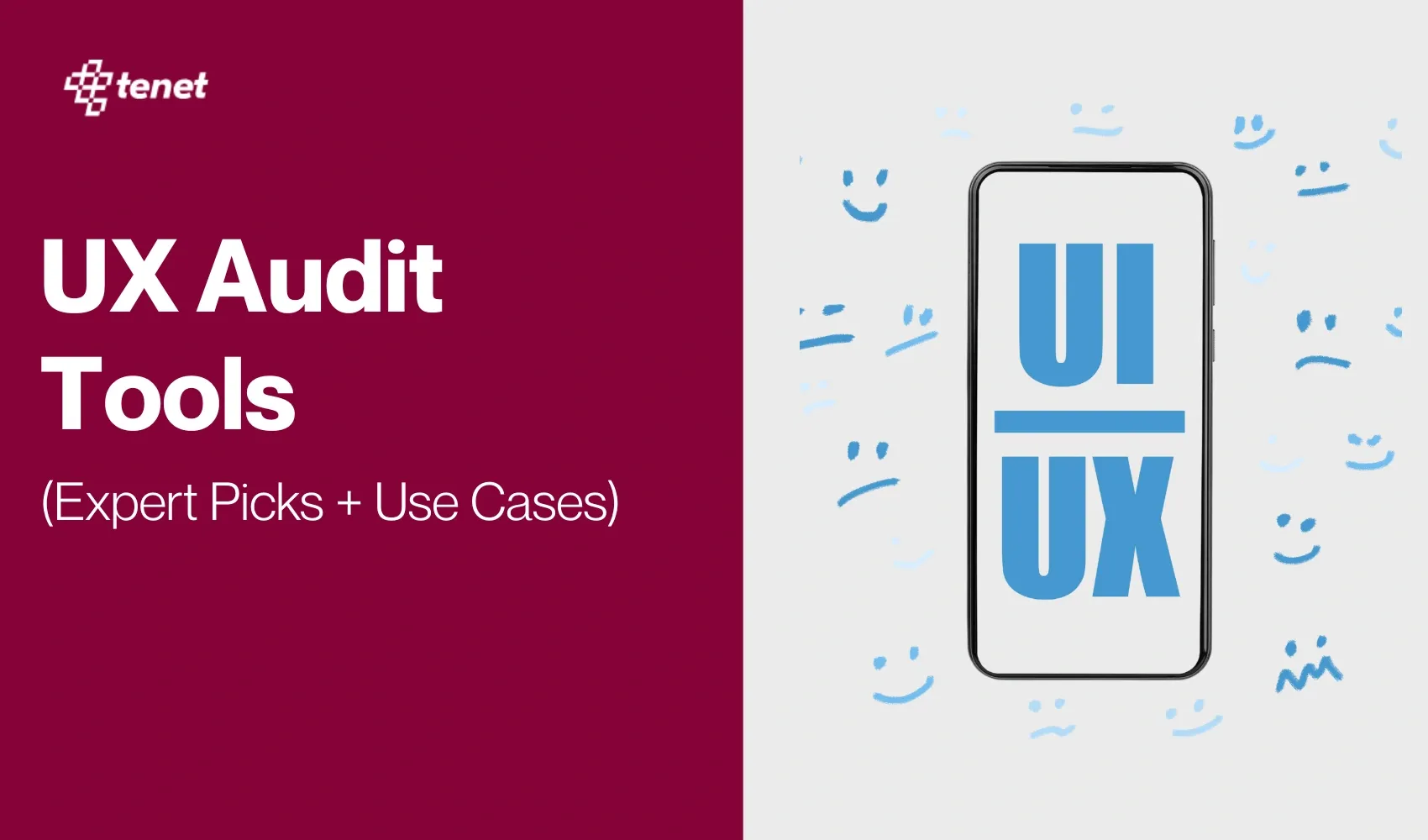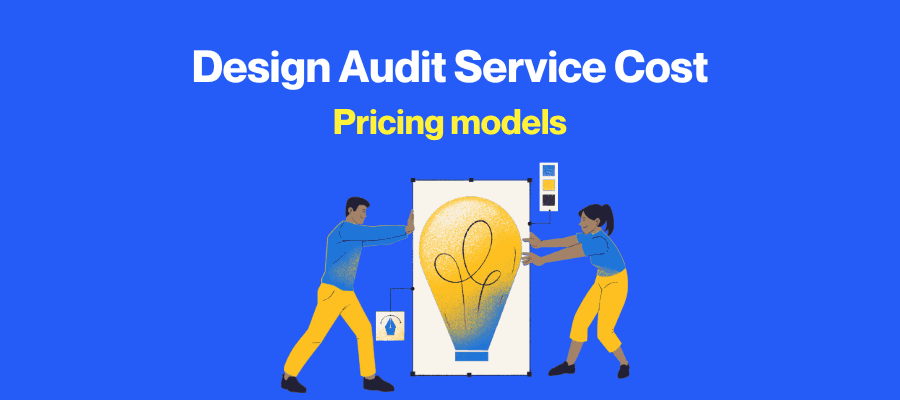35+ CRO Statistics: Conversion Rate Optimization Statistics
Share
Share

Get a quick blog summary with
In this listicle roundup, we address a common problem many businesses face: getting traffic that does not convert. You may attract visitors to your website, but if they do not take action, your growth remains limited.
To help you understand what drives real results, we have curated 35+ conversion rate optimization (CRO) statistics from trusted sources.
These insights show how landing pages, page speed, mobile experience, calls to action, and A/B testing influence conversions. Use this data to identify gaps, apply proven techniques, and improve your website’s conversion performance.
All source websites are listed at the end of this article.
Here are some interesting insights we should look into:
- The global average website conversion rate is 3.68%, while top-performing websites achieve 11% or higher.
- Well-optimized landing pages can achieve conversion rates of up to 11.45% or more, significantly surpassing the average of 2.35%.
- A well-designed UI can increase conversion rates by up to 200%, and an improved UX can increase conversions by up to 400%.
- Personalized CTAs improve conversion rates by 202%, and CTAs designed as buttons experience a 45% increase in clicks.
- For every 1-second delay in mobile page loading, conversions can drop by up to 20%.
- Websites featuring user-generated content (UGC) see an average conversion rate of 3.2%, which jumps by an additional 3.8% when users interact with UGC.
- Emails with a single CTA boost clicks by 371%. Additionally, personalized emails increase conversions by 10%.
- Adding a video to a landing page can increase conversion rates by up to 80%.
- 71% of companies conduct two or more A/B tests monthly to improve conversion rates.
What is the average conversion rate for websites?
- According to recent data from InvespCRO and Ruler Analytics, the overall average conversion rate stands at a modest 3.68%, with variations emerging across different market segments.
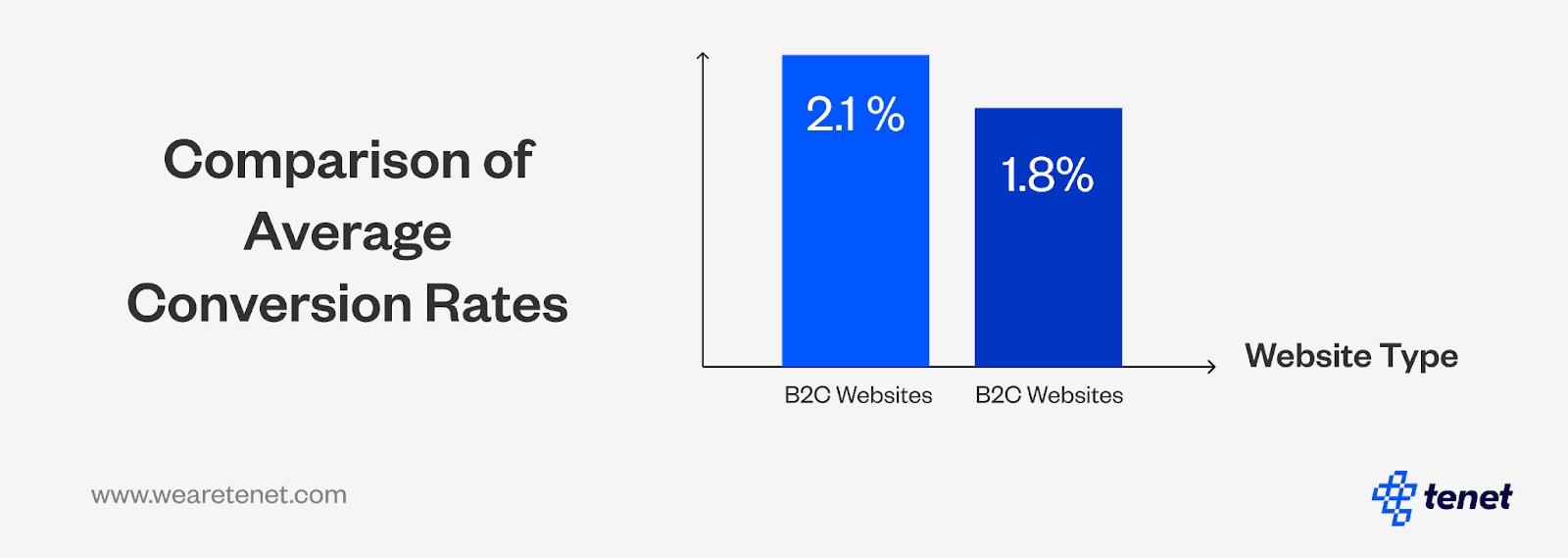
- When breaking down the data by business type, B2C websites tend to perform slightly better, achieving an average conversion rate of 2.1%, compared to B2B websites at 1.8%.
This industry-wide analysis, which spans fourteen different sectors, demonstrates an average conversion rate of 2.9%.
- The global conversion rate optimization (CRO) software market is experiencing robust growth, expanding from $1.98 billion in 2022 to a projected $2.83 billion by 2029, with a steady 5.16% CAGR.
These datasets highlight the challenges businesses face in transforming website visitors into customers, underscoring the importance of strategic optimization, compelling user experiences, and targeted marketing approaches to improve conversion performance.
What industry has the highest average conversion rates?
- The food and beverage sector stands out impressively, boasting the highest conversion rate at a remarkable 7.9%, according to InvespCRO.
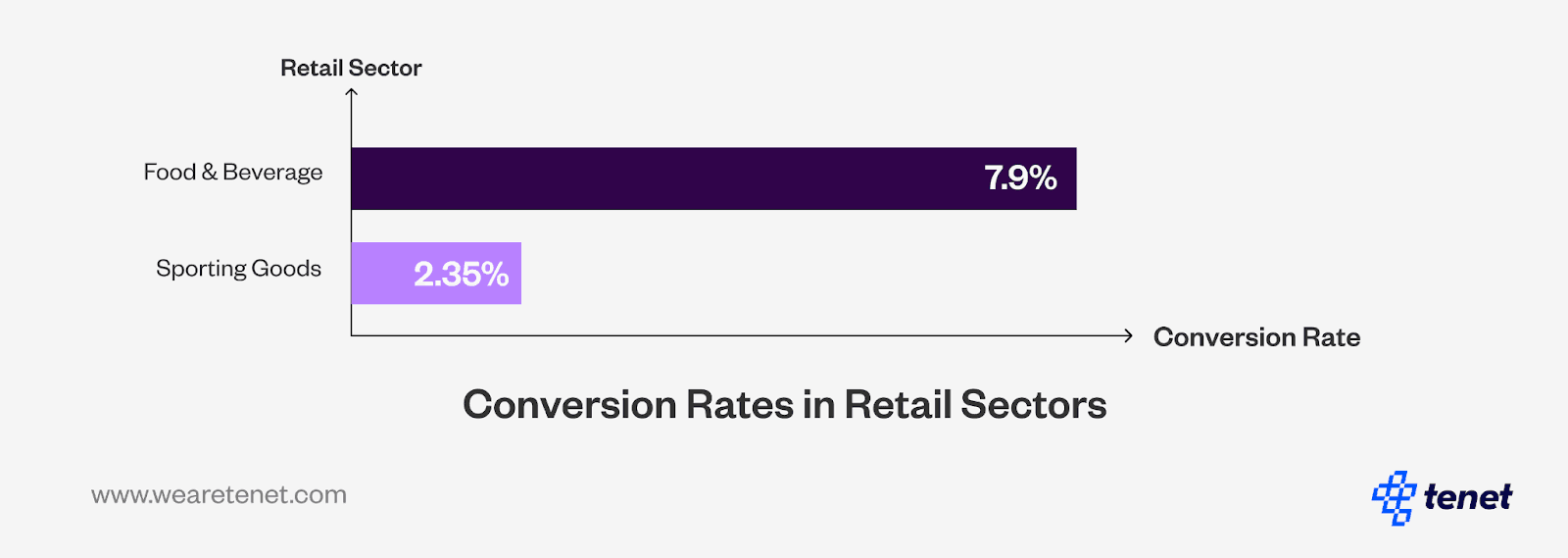
- On the flip side, sporting goods businesses face more significant challenges, recording the lowest industry conversion rate at just 2.35%.
- The legal services industry follows closely behind food and beverage, achieving a strong conversion rate of 7.4%.
- Beauty and personal care stand out with a conversion rate of 4.95%, reflecting its appeal to consumers.
- The multi-brand retail industry records a solid conversion rate of 4.65%, showcasing its versatility.
- Professional services in the B2B sector demonstrate notable success, with an average conversion rate of 4.6%.
- The fashion, accessories, and apparel industry sees a conversion rate of 3.23%, emphasizing its competitive nature.
- Pet care and veterinary services round out the list with a conversion rate of 3.14%, reflecting steady customer engagement.
These variations highlight how conversion performance is unique across industries, reflecting differences in customer behavior, online purchasing dynamics, and sector-specific marketing strategies.
The significant gap between the top performers like food and beverage and sectors struggling with lower conversion rates underscores the importance of tailored, industry-specific approaches to digital marketing and user experience optimization.
Do landing pages increase conversions?
Yes, Landing page optimization is crucial for businesses seeking to maximize their lead generation and conversion rates.
- Top-performing landing pages achieve conversion rates of 11.45% or higher.
- Research indicates that increasing the number of landing pages from 10 to 15 can lead to a remarkable 55% increase in leads.
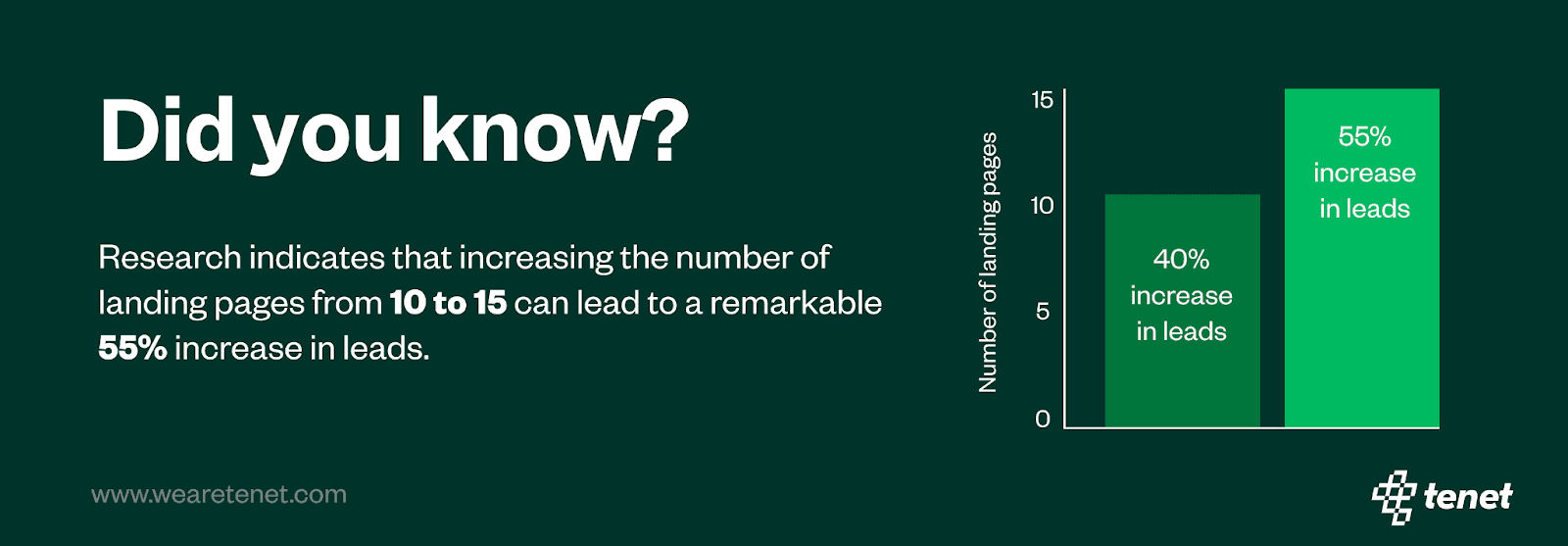
- Personalized landing pages have been shown to increase conversions by 202%, reinforcing the need to align content and design with individual user preferences.
- Landing pages that incorporate a single call-to-action (CTA) can further boost conversion rates by an astonishing 371%, emphasizing the effectiveness of clear and focused messaging.
- Adding engaging elements like videos also significantly enhances performance, with studies showing that including videos on landing pages can increase conversion rates by up to 80%.
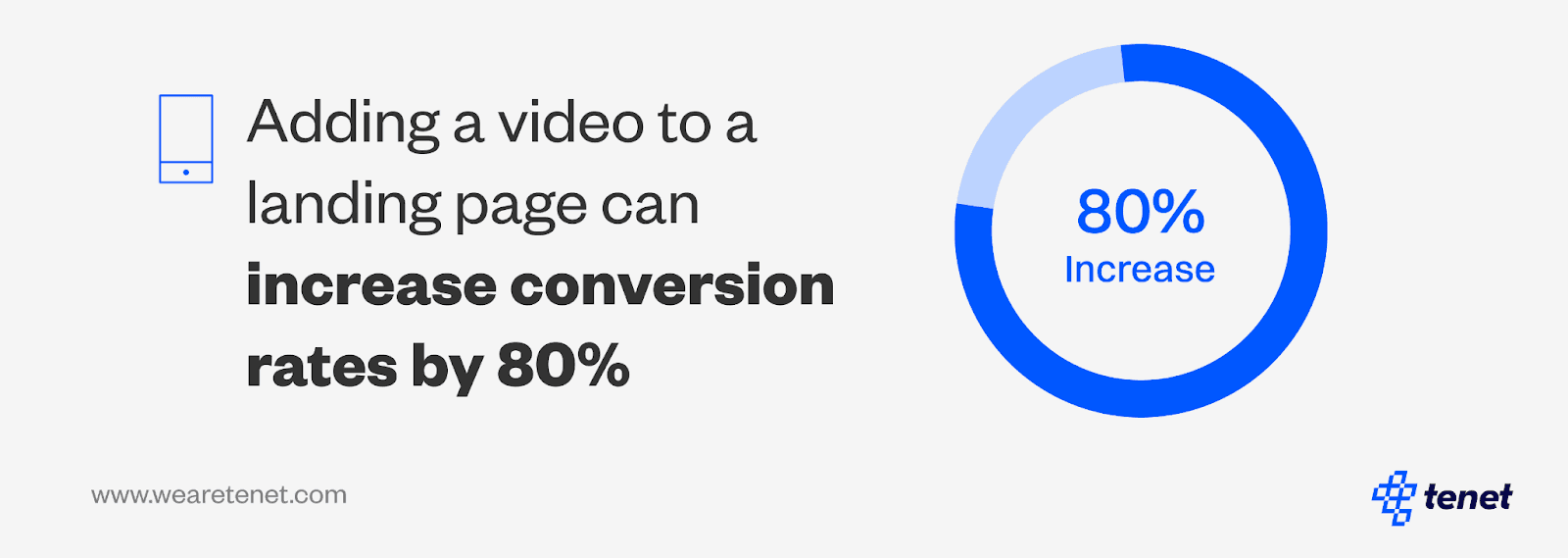
This highlights the importance of having multiple targeted landing pages tailored to specific campaigns or audiences.
These insights underscore the value of strategic, personalized landing page design and content in driving user engagement and achieving business goals.
Can user experience increase conversion?
A seamless user experience (UX) and an intuitive interface design are crucial for driving conversions. These statistics highlight the significant impact that design can have on business success.
- Research by Forrester indicates that a well-crafted UI can double(200%) conversion rates while improving UX can quadruple(400%) them.
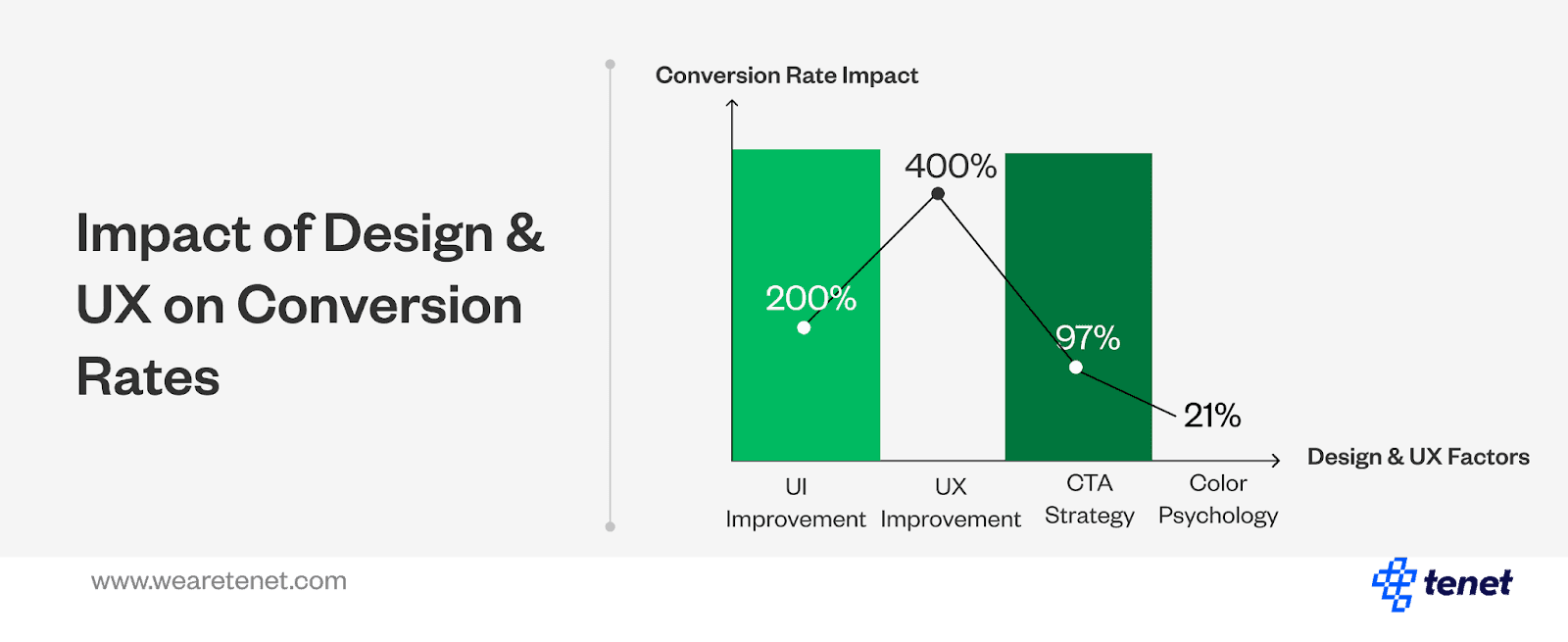
Call-to-action (CTA) design has emerged as a critical precision tool in digital marketing.
- The strategic use of keywords in CTAs can yield remarkable results, with research showing potential conversion rate increases of up to 87%.
- Color psychology plays an equally intriguing role, with red CTAs demonstrating a surprising ability to boost conversion rates by 21%.
- A poor user experience can have lasting negative consequences. HubSpot reports that a staggering 88% of users are less likely to return to a website after a bad experience.

These insights go beyond mere aesthetics, revealing how carefully crafted CTAs can serve as powerful psychological triggers that guide user engagement.
The color, wording, and placement of a call-to-action, website design are not just mere choices, but strategic decisions that can significantly impact a business's bottom line.
By prioritizing data-driven CTA optimization, website UI, and UX design, companies can transform passive visitors into active customers, bridging the gap between interest and action while enhancing conversions and fostering lasting customer relationships.
How does site speed affect conversion rates?
- Slow-loading pages directly impact business performance by reducing conversions by 7%.
- Even more striking, 39% of users will abandon a website if it fails to load quickly, underlining the razor-thin margin for digital patience.
- Web design responsiveness compounds this challenge, with 73% of designers identifying non-responsive design as the primary driver of high bounce rates.
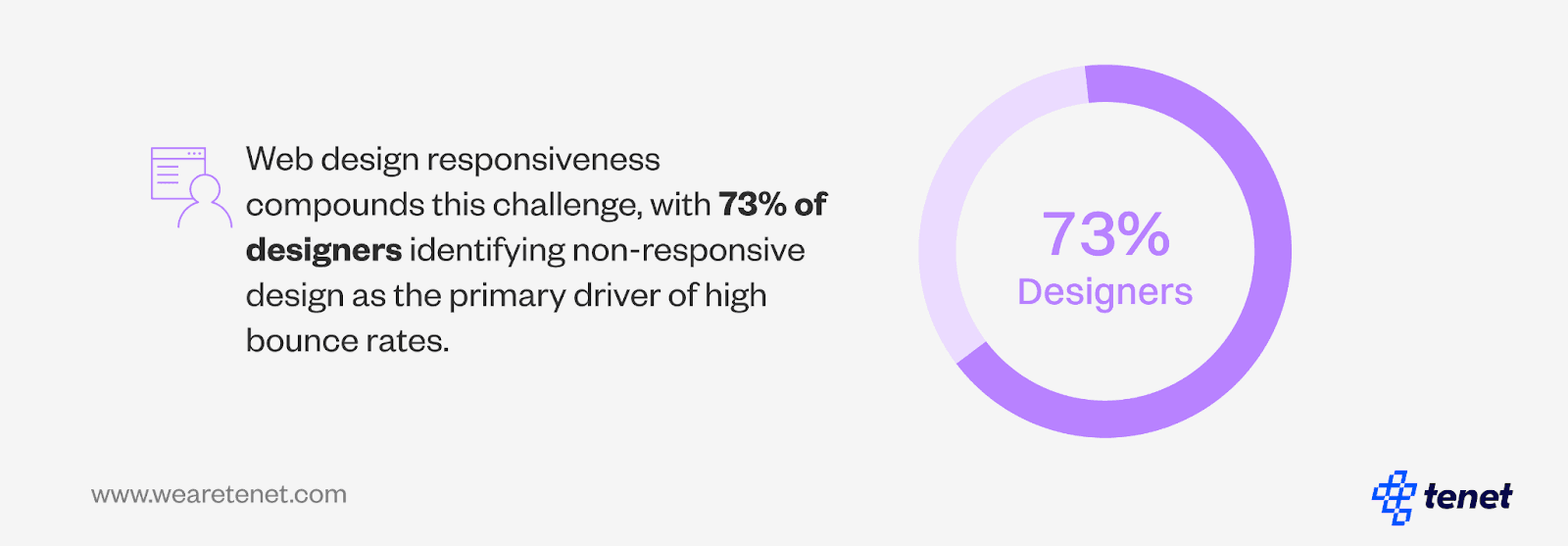
- Interestingly, exit popups offer a strategic counterpoint, converting an additional 2-4% of traffic—a testament to the nuanced strategies businesses can employ to recapture potentially lost opportunities.
The implications are clear, in an era of instant gratification, every second of loading time and every pixel of design responsiveness can determine whether a potential customer stays or leaves.
These insights reveal a fundamental truth of technical performance and user experience are not just design considerations, but critical business imperatives that directly influence conversion rates and bottom-line results.
Why is mobile optimization necessary?
- An overwhelming 85% of users now expect mobile sites to perform as well as or better than desktop sites, emphasizing the critical importance of responsive design.
- The stakes are clear: shopping cart abandonment rates starkly highlight the mobile challenge, with 77.8% on mobile devices compared to 67.1% on desktop.

These figures reveal a crucial truth—mobile optimization is no longer optional but a business imperative. To convert digital traffic into tangible sales, businesses must prioritize seamless and intuitive mobile experiences.
In an increasingly mobile-first world, brands that fail to adapt risk losing a significant share of their potential customer base.
Is A/B testing used for conversion rate optimization?
- A/B testing is one of the critical strategies in conversion rate optimization (CRO), with 71% of companies conducting two or more tests monthly, according to InvespCRO.
- This methodical approach to digital strategy yields remarkable results, with businesses implementing documented CRO strategies experiencing an average return on investment of 223%.
By systematically comparing different versions of web elements, companies can make data-driven decisions that transform user experience and dramatically improve conversion performance.
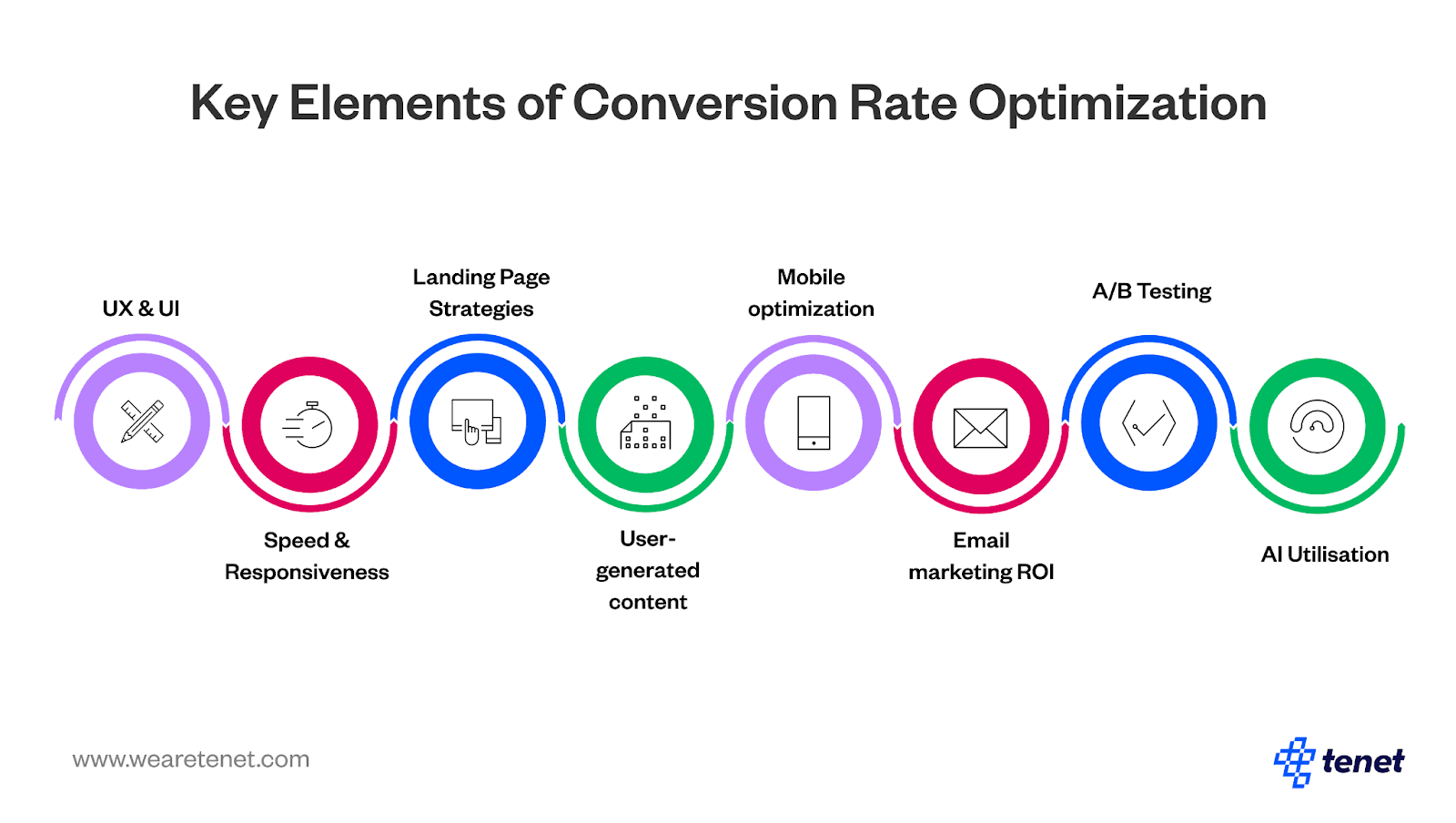
This approach moves beyond guesswork, providing concrete insights into what resonates with audiences and driving continuous improvement in digital marketing efforts.
What is the average ROI for email marketing?
- With an average click-through rate of 8.93%, email marketing remains a potent digital strategy.
How can businesses design effective calls-to-action (CTAs) to maximize their impact on clicks and sales?
- The strategic power of content becomes evident when considering key conversion drivers: a single, clear call-to-action can dramatically boost clicks by 371% and sales by 1,617%.
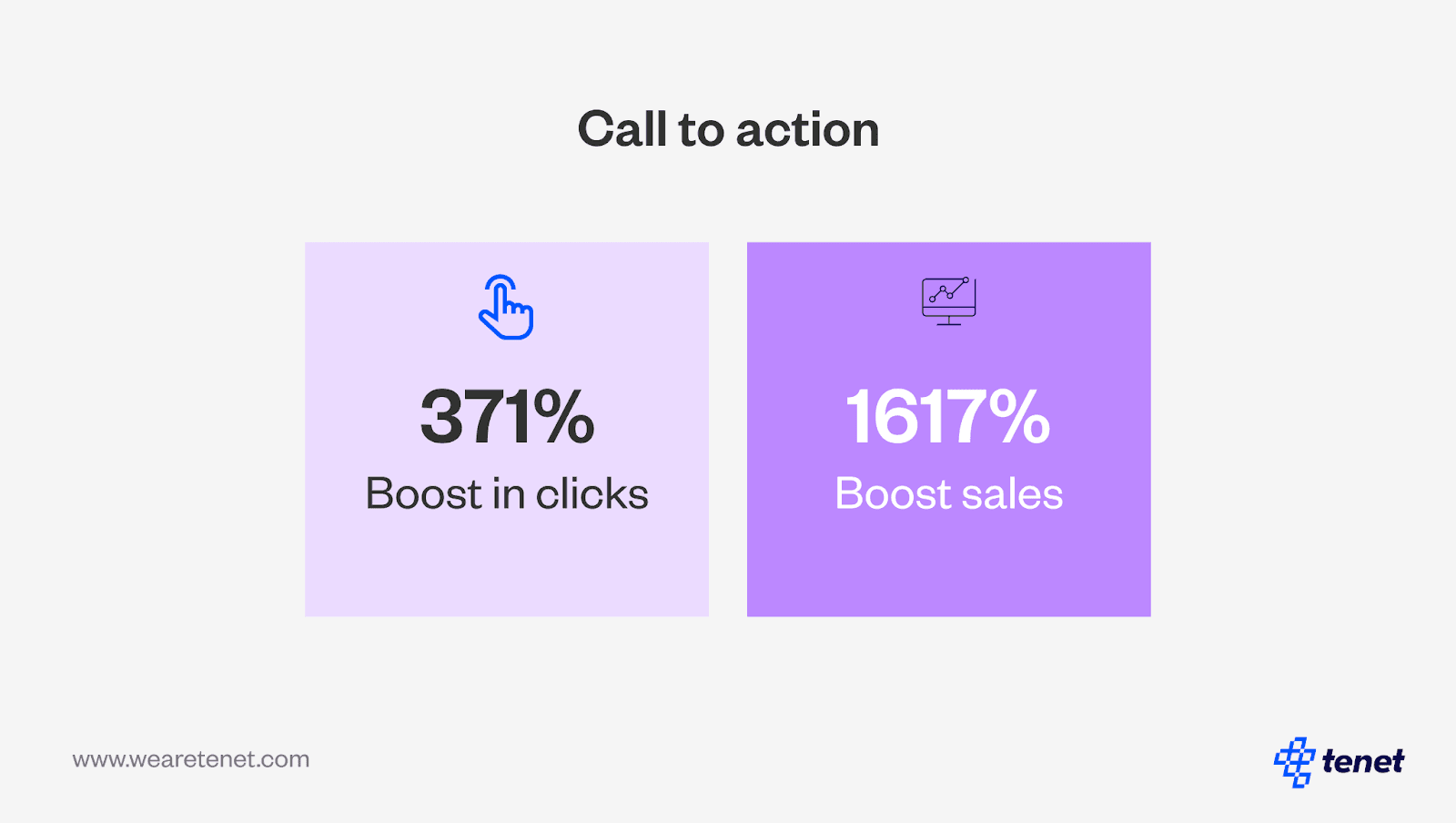
- Furthermore, strategically using CTAs as anchor text in blog content can amplify conversion rates by an impressive 121%.
What are the benefits of maintaining a balance between content length and reader attention span?
- Blog engagement reveals another critical insight, with posts seeing optimal conversion rates of 5% when readers spend 2 to 5 minutes on content.
What role does social proof play in conversion rate optimization?
- Social proof plays a transformative role, as websites incorporating testimonials and reviews can experience a substantial 34% increase in conversions.
These statistics highlight the nuanced art of digital marketing, where targeted design, compelling content, and strategic positioning can significantly enhance user engagement and business performance.
What is the conversion rate for UGC?
User-generated content (UGC) has become a powerful tool for driving higher conversion rates on websites.
- Studies reveal that the mere presence of UGC can lead to a conversion rate of 3.2%, a strong indicator of its influence.
- However, the impact of UGC increases significantly when visitors engage with it—interaction with UGC can boost conversion rates by an additional 3.8%.
This underscores the importance of fostering user engagement through content that resonates with potential customers, such as reviews, testimonials, and social media posts.
By integrating UGC into their websites, businesses can not only build trust but also improve the overall user experience, leading to improved conversions and customer loyalty.
How is artificial intelligence reshaping the future of digital marketing?
Artificial Intelligence is rapidly reshaping the landscape of digital marketing and conversion optimization.
- In a compelling case study, Goldelucks experienced a remarkable 31.56% increase in orders through AI-driven optimizations, demonstrating the transformative potential of intelligent technologies.
- Even more striking are the improvements in product descriptions, where AI-powered content strategies helped businesses boost conversion rates from 26% to 46% within just eight weeks.
These insights reveal AI not as a futuristic concept, but as a practical, powerful tool for businesses seeking to enhance user experience, personalize interactions, and drive measurable performance improvements.
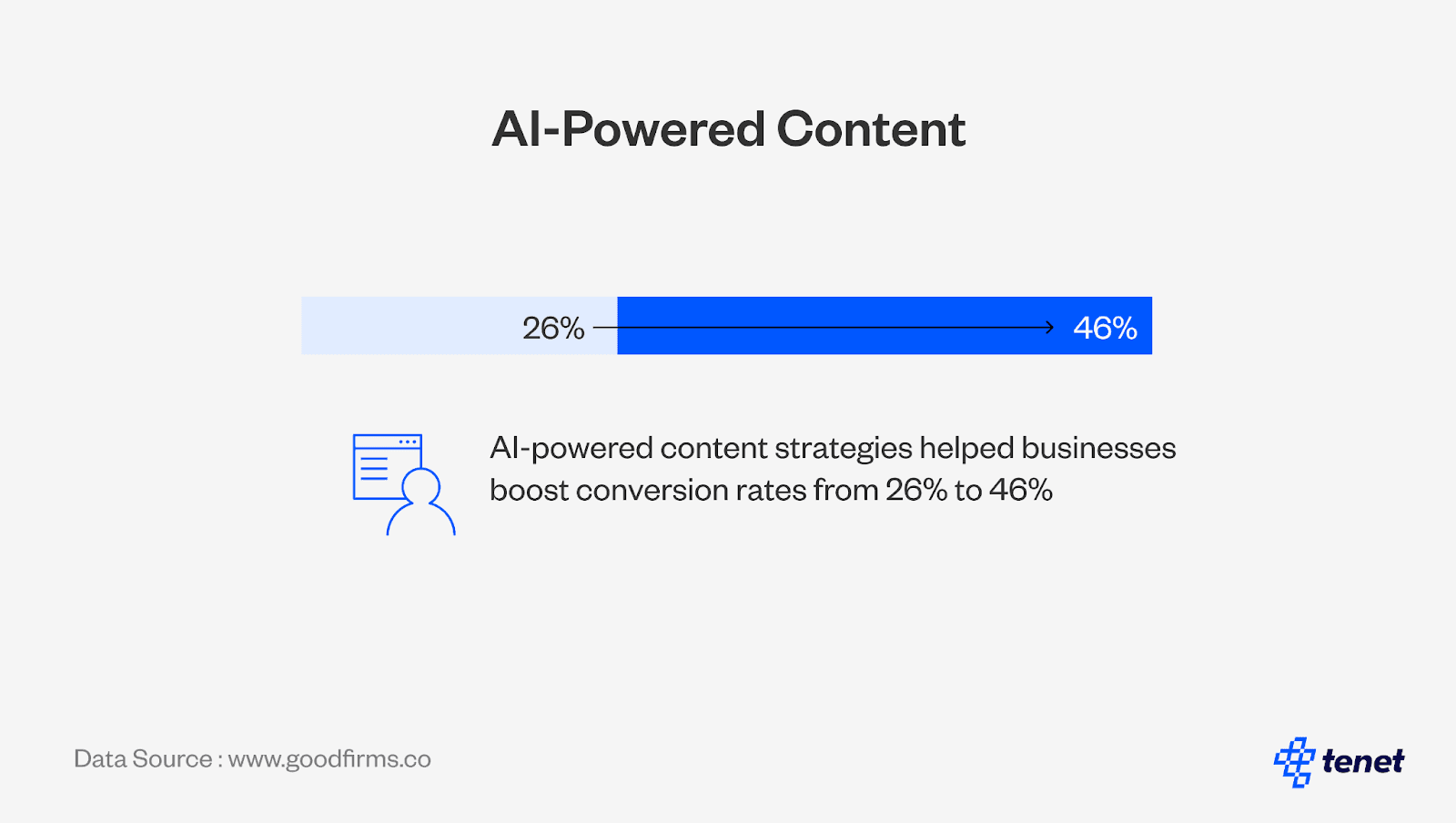
By leveraging machine learning and advanced analytics, companies can now make data-driven decisions that significantly optimize conversion pathways, turning sophisticated technology into a direct competitive advantage.
How Tenet can help you increase conversion rates
With over 450 successful projects across 15 countries, Tenet has helped leading brands like Kawasaki, DoorDash, and Deloitte achieve up to 5x ROI through strategic CRO implementation. Our data-driven approach combines advanced analytics, comprehensive user research, and strategic A/B testing to optimize your entire conversion funnel.
We don't just focus on quick wins – our expert team develops sustainable strategies that enhance both conversion rates and long-term customer value.
👉 Learn more about our conversion rate optimization services and CRO audit service.
Data sources
- invespcro.com
- seedprod.com
- yaguara.co
- highervisibility.com
- constantcontact.com
- maximizemarketresearch.com
- forrester.com
- bluecorona.com
- sweor.com
- hubspot.com
- hbswk.hbs.edu
- wordstream.com
- freshworks.com
- ruleranalytics.com
- yotpo.com
- convertica.org
- landingi.com
- optimonk.com
- webfx.com
- spiegel.medill.northwestern.edu
- 99firms.com
- firstpagesage.com
- optinmonster.com
- hiverhq.com
- backlinko.com
- redeye.com
- zuko.io
- forbes.com
- notifyvisitors.com
- unbounce.com
- vwo.com
- thinkwithgoogle.com
- userguiding.com
Expertise Delivered Straight to Your Inbox
Expertise Delivered Straight to Your Inbox

Got an idea on your mind?
We’d love to hear about your brand, your visions, current challenges, even if you’re not sure what your next step is.
Let’s talk




